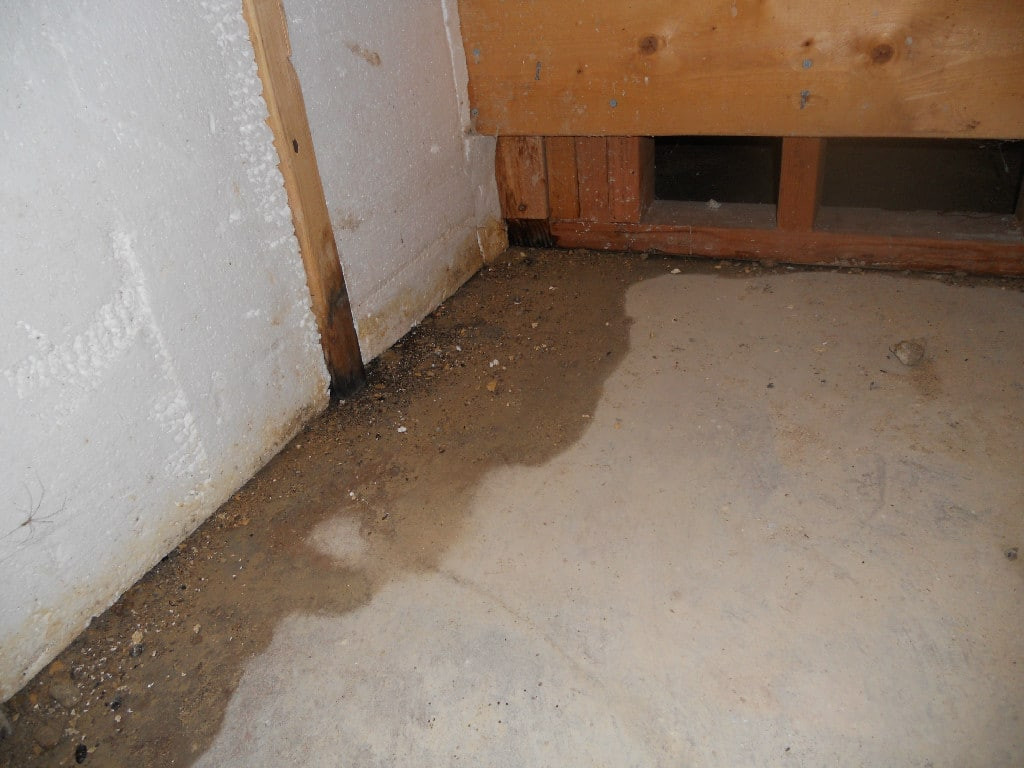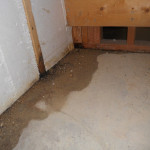Springtime in Maryland brings warmer temperatures, blooming flowers, and unfortunately, plenty of rain. As the ground thaws and heavy showers become more frequent, homeowners must be vigilant about potential water damage in their basements. Early detection is crucial. Spotting the first signs of moisture problems can save you thousands of dollars in repairs and protect the health and structure of your home.
At AquaGuard Waterproofing, we understand the challenges that springtime moisture presents. Here’s a comprehensive guide to help you recognize early signs of water damage in your basement — and what to do when you spot them.
Why Spring Is a Critical Time for Water Damage
During the winter, snow and ice can accumulate around your home’s foundation. As temperatures rise in spring, this moisture melts, saturating the soil. Combined with spring rains, the ground around your home can become oversaturated, leading to increased hydrostatic pressure against your basement walls. Without proper waterproofing, this pressure can force water through cracks, joints, and porous materials.
Common Early Signs of Basement Water Damage
- Musty Odors If you notice a persistent, damp, or musty smell in your basement, it’s often the first warning sign of hidden moisture. Mold and mildew thrive in humid environments and release gases that create that characteristic smell.
- Visible Mold or Mildew Mold can appear in a variety of colors — black, white, green, or even orange. It often grows in corners, along baseboards, or behind furniture where moisture accumulates. Even small patches of mold indicate that conditions are ideal for more extensive growth.

- Water Stains Look for discoloration on walls, floors, and ceilings. Water stains often appear as yellowish, brown, or darker patches. They can indicate that water has seeped through materials and dried, leaving minerals and dirt behind.
- Efflorescence This white, chalky substance on basement walls is a sign that water is passing through concrete or masonry. As water evaporates, it leaves behind salt deposits. While efflorescence itself isn’t dangerous, it indicates active moisture intrusion.
- Peeling Paint or Bubbling Wall Coverings Paint or wallpaper that is peeling, bubbling, or cracking often signals moisture trapped behind the surface. Water weakens adhesives and breaks down materials, leading to these visible symptoms.
- Warped or Buckled Flooring Carpets, tiles, and hardwood flooring in basements are vulnerable to water damage. If you notice flooring lifting, warping, or feeling spongy underfoot, moisture is likely the culprit.
- Cracks in Walls or Floors Small hairline cracks can form naturally as a home settles, but larger cracks or new cracks, especially those that widen over time, suggest that water pressure is impacting your foundation.
- Rust on Appliances or Fixtures Rust spots on water heaters, furnaces, metal shelving, or electrical panels indicate high humidity or direct water exposure.
- Puddles or Damp Spots Obvious signs like standing water, damp spots on the floor, or wet walls are clear indicators that water is entering your basement. Even small puddles should not be ignored.
- Increased Humidity If your basement feels unusually humid, sticky, or damp, it’s likely that moisture is present. A hygrometer can help you measure humidity levels; anything above 60% can create a risk for mold growth and structural damage.
Hidden Sources of Water Damage
Not all signs of water damage are immediately visible. Hidden problems can include:
- Leaky Plumbing: Small leaks behind walls or under floors can lead to significant damage over time.
- Improper Grading: If the soil around your home slopes toward your foundation, water will naturally flow toward your basement.
- Clogged Gutters and Downspouts: Poor drainage can cause rainwater to pool around the foundation, increasing the risk of leaks.
- Faulty Window Wells: Cracked or improperly installed window wells can allow water to enter around basement windows.
The Health Risks of Ignoring Early Signs
Water damage isn’t just a structural issue — it’s a health hazard. Moist environments encourage the growth of mold and mildew, which can trigger allergies, asthma attacks, and other respiratory issues, especially in children, the elderly, and those with compromised immune systems. Protecting your basement from water intrusion also means safeguarding your family’s health.
What to Do If You Spot Signs of Water Damage
- Don’t Ignore It Even minor signs should be addressed immediately. Water damage worsens over time and can quickly escalate into major structural problems.
- Document the Damage Take photos and notes. Documenting visible signs can help when consulting with professionals or filing insurance claims.
- Contact Professionals At AquaGuard Waterproofing, we offer free, comprehensive inspections. Our trained specialists can diagnose the root cause of water issues and recommend tailored solutions that permanently protect your home.
- Consider Preventive Solutions Depending on the severity and cause, solutions may include:
- Interior drainage systems
- Exterior waterproofing membranes
- Sump pump installation with battery backups
- Foundation crack repairs
- Grading and gutter improvements
How AquaGuard Waterproofing Protects Your Home
We provide:
- Detailed Inspections: Identifying not only existing damage but potential future vulnerabilities.
- Customized Plans: Every home is unique, and we tailor our waterproofing methods accordingly.
- High-Quality Materials: We use only industry-leading products designed for maximum durability.
- Expert Installation: Our experienced technicians ensure that every component is installed correctly for optimal performance.
- Warranties: We stand behind our work, offering peace of mind and long-term protection.
Preventing Future Water Damage
Besides professional waterproofing, there are steps homeowners can take to minimize risk:
- Regularly Inspect Gutters and Downspouts: Keep them clear and ensure they direct water at least 6 feet away from the foundation.
- Maintain Proper Grading: Ensure the ground slopes away from your home.
- Install a Dehumidifier: Keep basement humidity levels below 60%.
- Seal Cracks Promptly: Small cracks can become large entry points for water if not addressed.
- Check Sump Pumps Annually: Test your sump pump before the rainy season to ensure it’s functioning properly.
Why Early Action Matters
The earlier you detect and address water damage, the less expensive and disruptive the solution will be. Ignoring early signs can lead to major repairs such as foundation reconstruction, extensive mold remediation, or even the loss of valuable possessions stored in the basement.
Partner with Professionals for Lasting Protection
Waterproofing is not a DIY task you want to tackle alone. Identifying and addressing the full scope of basement moisture problems requires expertise, specialized equipment, and professional-grade materials.
AquaGuard Waterproofing offers the knowledge, experience, and tools necessary to permanently solve your basement water issues. Our team is dedicated to helping Maryland homeowners protect their investments and create healthier, safer living environments.
Schedule Your Free Inspection Today
If you’ve spotted any signs of water damage — or simply want the peace of mind that comes with a dry, protected basement — don’t wait. Contact AquaGuard Waterproofing today for your free, no-obligation inspection. Let us help you safeguard your home this spring and for many seasons to come.
Conclusion
Spring is a season of renewal, but it can also be a time of risk for homeowners with vulnerable basements. By learning to spot the early signs of water damage and acting quickly, you can avoid costly repairs, protect your home’s value, and ensure a healthier environment for your family. Trust the experts at AquaGuard Waterproofing to keep your home safe, dry, and secure — this spring and beyond.



